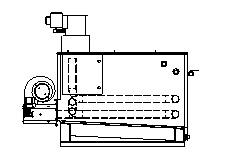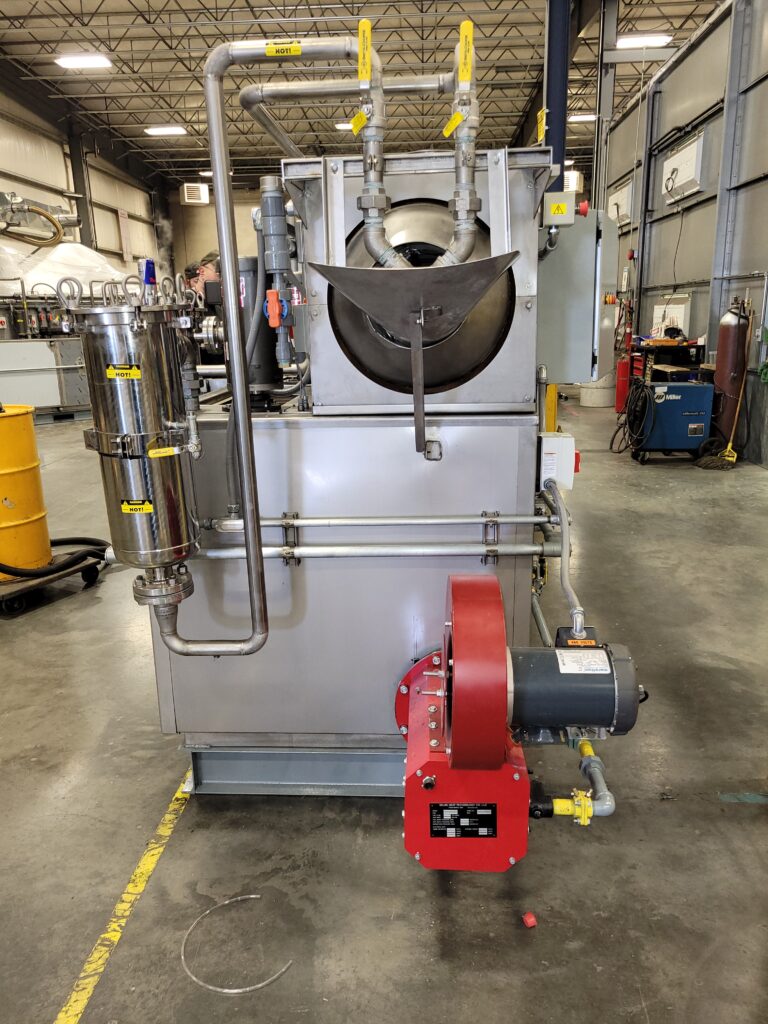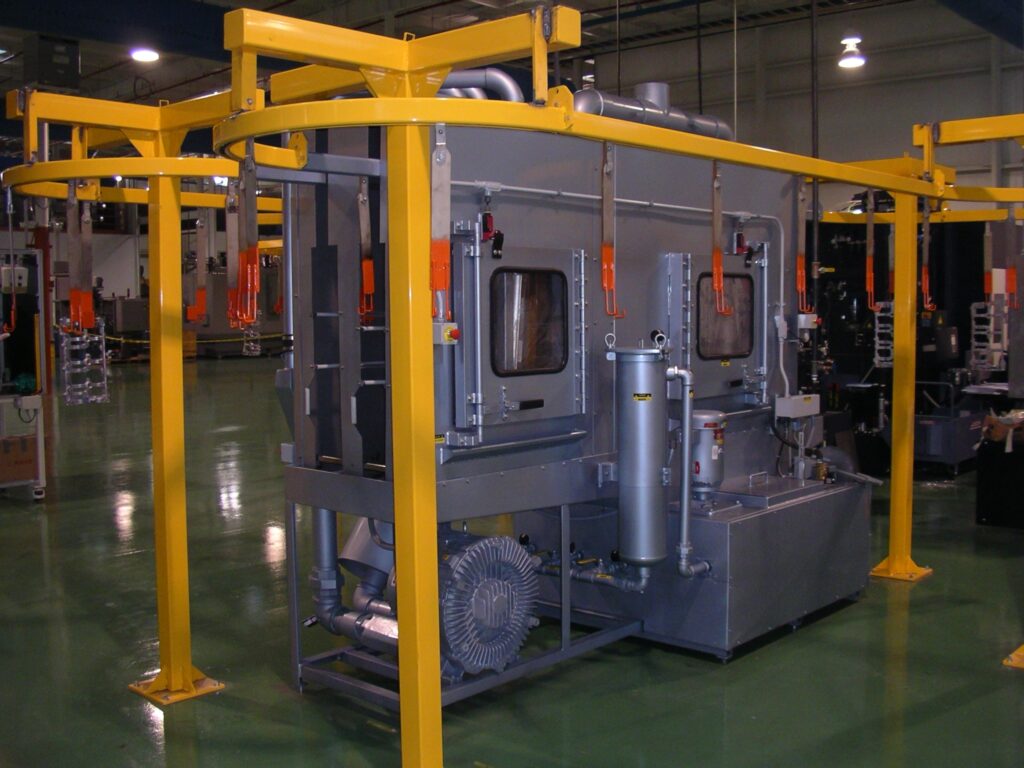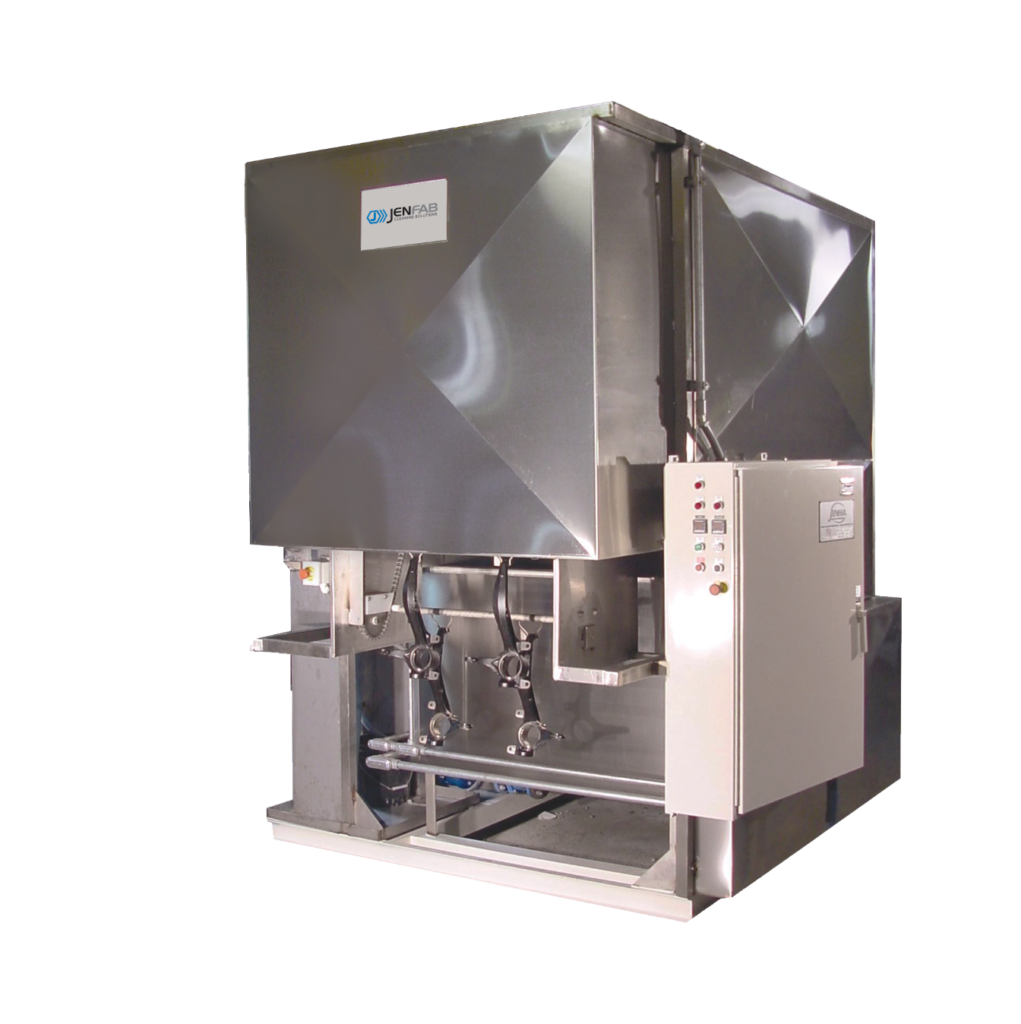Cleaning rests on four factors: time, chemistry, mechanics and, of course, temperature. Heated aqueous parts washers save you time by reducing how long it takes to clean and process parts.
Cleaning at higher temperatures increases chemical reaction rates. When you heat cleaning chemistry, the molecules move faster, hastening the chemical reaction between the chemistry and soils.
Adding heat speeds up parts cleaning, so it’s important to factor in how your aqueous parts washer will produce heat. Electric parts washers and natural gas-powered parts washers are common choices.
Let’s explore the differences between gas and electric heat. Then, you can talk to a parts washer manufacturer about designing your system.
Jenfab Cleaning Solutions designs custom parts washers. Contact us today to solve your parts cleaning challenges.
Jump to:
- 3 ways to heat tank solution
- Know your facility’s constraints
- 3 Benefits of gas parts washers
- Design your heated parts washer
3 Ways to Heat Tank Solution
An aqueous cleaning system has many components that work together. A crucial part of any system is the solution tanks. The way the cleaning solution flows to and from the tank allows you to filter and recirculate it, reducing replacement costs.
From the tank, cleaning solution flows through pumps and sprayers onto the parts inside the machine. The used cleaning solution is filtered and returned to the tank. You should consider how you’ll heat the cleaning solution when thinking about your machine.
Typically, we heat solution tanks with one of three sources:
- Steam – Transfers energy from steam created. Uses a condensate return system to collect condensation.
- Natural gas – Supplies natural gas to a burner that produces heat.
- Electricity – Uses electricity to heat solution tanks.
Natural gas and electricity are used most often. Many manufacturers find that using natural gas to heat parts washers offers many advantages. However, your facility’s constraints and capacity can affect your choice when selecting an aqueous parts washer.
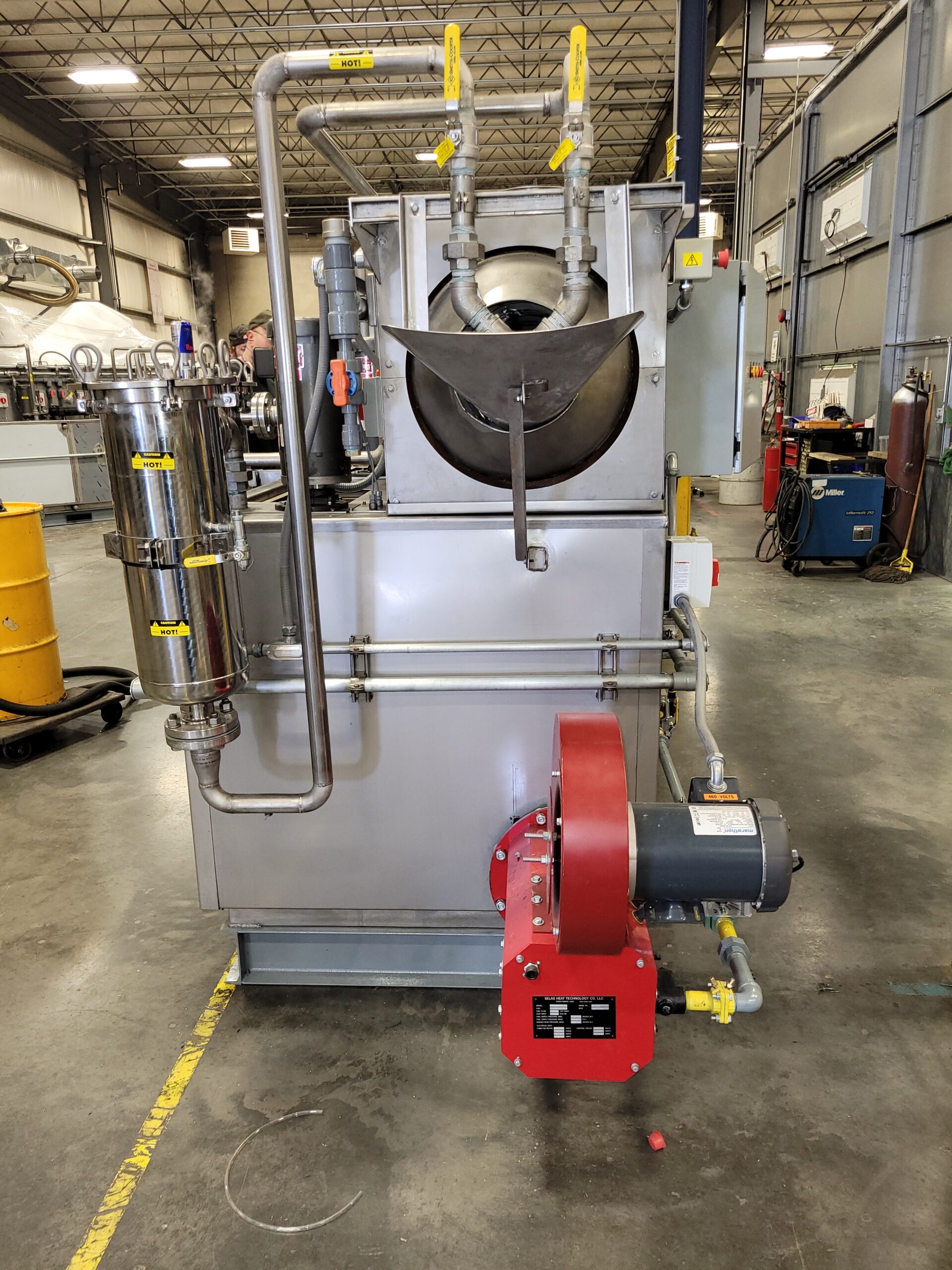
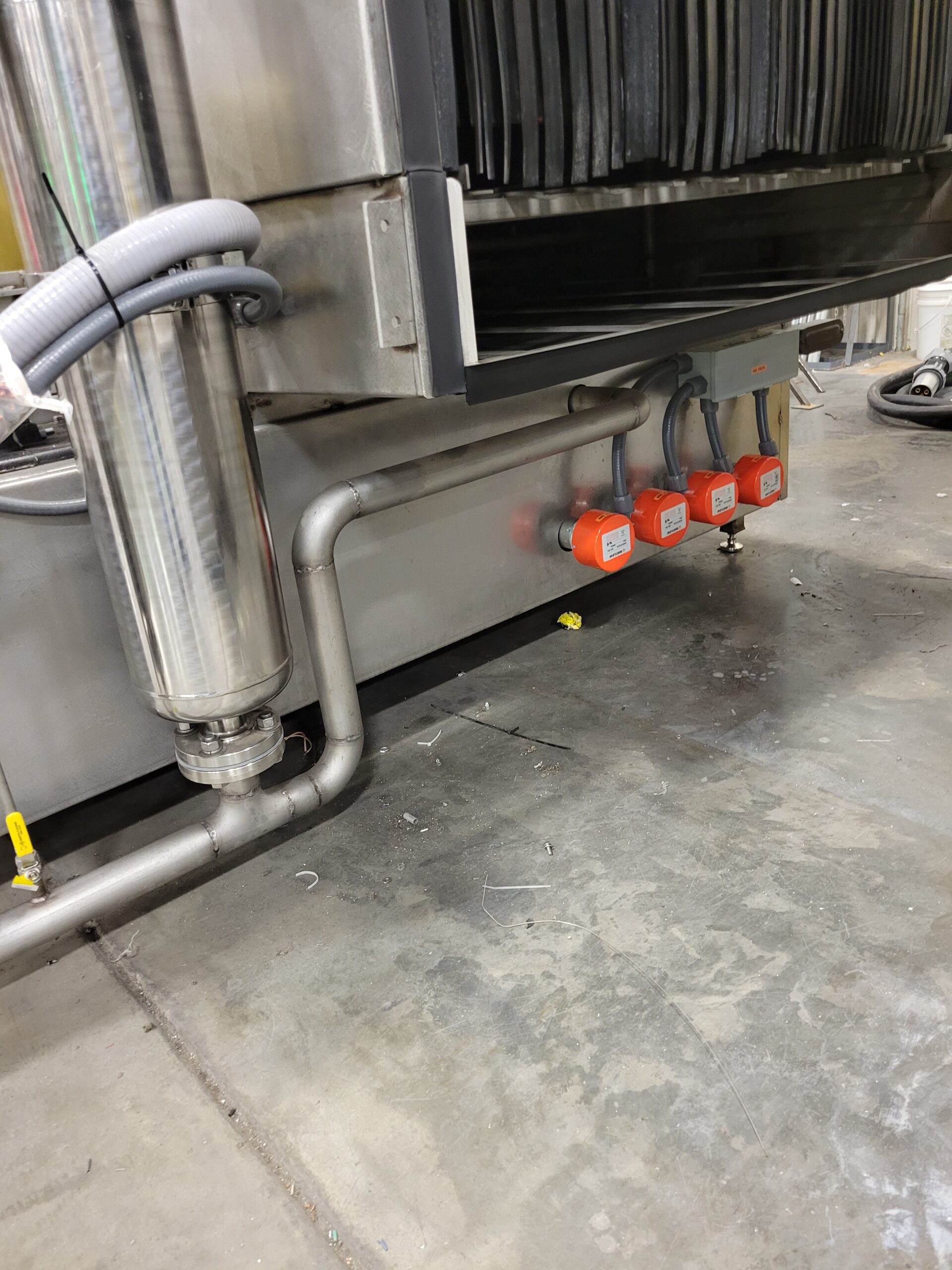
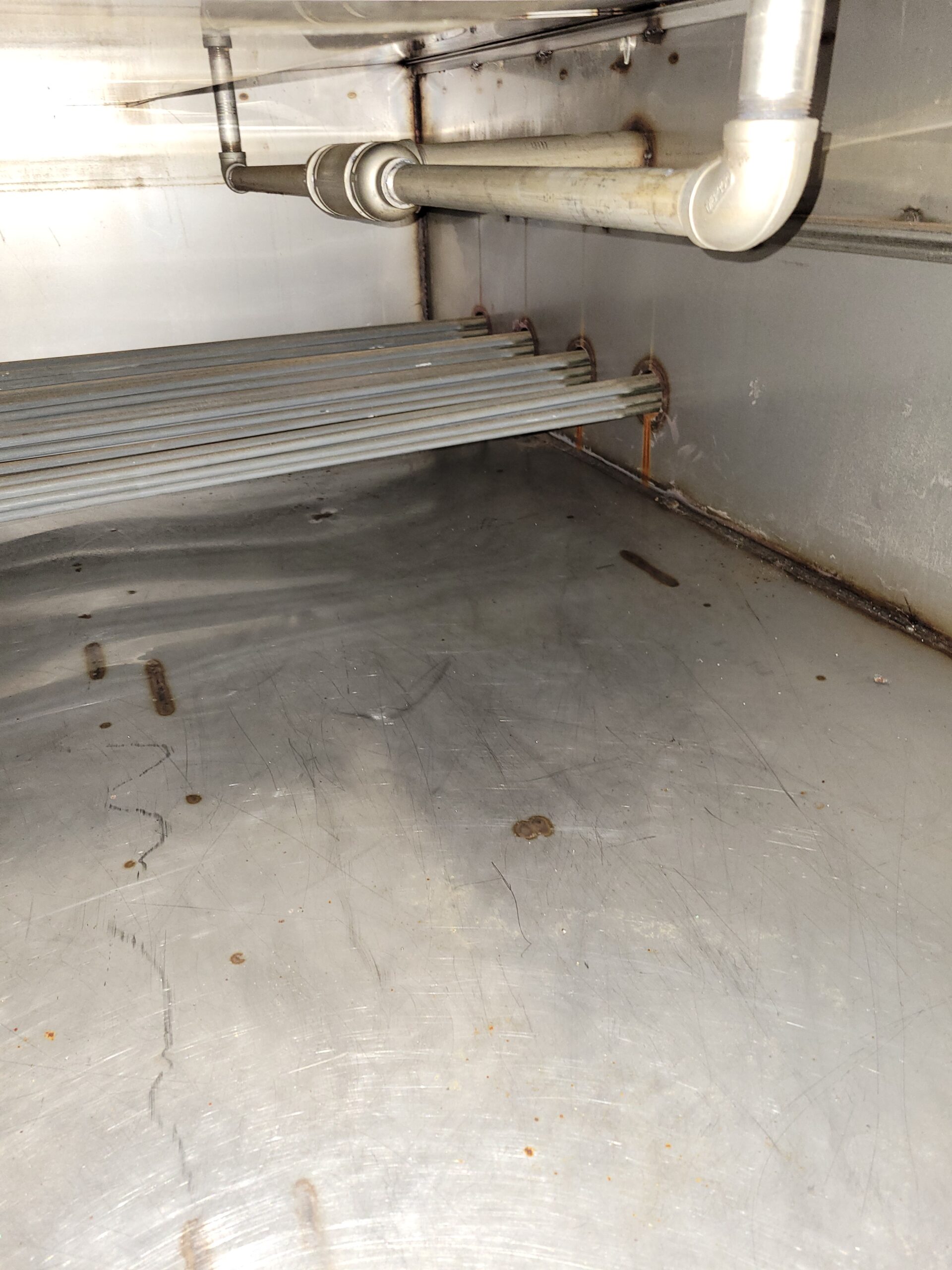

Know Your Facility’s Constraints
The first thing to consider when choosing whether to use gas or electric heat is your facility’s utility constraints. Today, most facilities have both natural gas and 460V electrical supply, but that doesn’t mean your facility has the necessary capacity.
Analyzing your constraints is the first step. Gas burners require a natural gas supply with minimum water column and BTU requirements. Before you pick natural gas to heat your tank, you must ensure your supply can feed a gas burner without starving it.
Systems operating on electric heat don’t require natural gas supplies but a larger electrical service. You must understand a proposed system’s full load amp draw and whether your facility can support it.
3 Benefits of Gas Heat for Parts Washers
Why choose gas over electric heat? The following are a few reasons why parts washers that heat with industrial gas burners are prevalent across industries.
1. Lower Utility Costs
The first big benefit of using gas heat rather than electric heat is reduced utility costs.
Natural gas parts washers use gas combustion burners. Firing through a burner tube heats the tank. On an electric system, coil elements produce heat. A natural gas system requires significantly less amps to operate.
In most U.S. municipalities, natural gas is less expensive than industrial electricity prices. Not only is the service running to a machine using natural gas heat smaller but the FLA is often reduced by more than 50%.
2. Longer Life Expectancy
We want to get the most out of our machines. Gas burners and electric heating elements have different life expectancies and maintenance requirements.
Over time, electric heating elements wear out. They require regular replacements during the machine’s life. To replace them, you must remove the elements from the tanks—so you must empty the tanks first.
Gas burners fire through stainless steel tubes that weave through tanks. These tubes are made to last the lifetime of the machine. That means you won’t need to maintain the in-tank tubes like you would with electric heating elements.
Industrial burners are located on the exterior of the machine. If you need to service or tune the burner, you can do so without emptying the tanks.
3. Reduces Operational Costs
Your choice between electric parts washers and those heated by natural gas influence your cost of operation.
Gas burners pull fewer amps than electric heating elements. Often, natural gas can be less expensive than industrial electricity. With both of these factors in mind, your return on investment with a gas heat source is often realized in the first year.
Gas burners cost more up front than electric heating elements, adding to the total cost of your aqueous parts washer. However, when you combine the decrease in amps pulled and the average natural gas prices, companies often see drastic reductions in operational costs. This is especially true for those operating machines in a production capacity.
Design Your Heated Parts Washer
Both electric heat and gas heat have a place in the industry. They both serve their purpose for heated parts washers, but the benefits of using gas heat grow as the size of your machinery grows.
Gas heat is often best for large parts washers or machines that will process large part quantities. Before deciding on a machine, discuss your facility’s capacity and cleaning needs with an experienced manufacturer.
Jenfab Cleaning Solutions will guide you based on your application, budget and constraints. We’ll discover if you need a heated parts washer with a cabinet or an in-line machine that feeds into other equipment.
Request a quote online or call our toll-free number at 800-524-9274. Let’s make parts cleaning easier for you!
…
This article was written by John Davidson, Chief Commercial Officer of Jenfab Cleaning Solutions. John has been with Jenfab since 2011. He has experience in sales, production and quality capacities. Connect with John on LinkedIn.
Jenfab Cleaning Solutions is one of the largest parts washer manufacturers in the United States. The company has provided innovative custom cleaning solutions since 1960. Jenfab serves automotive, medical, ammunition, heavy equipment and aerospace manufacturers.











